Sustainable Eating for a Healthier Planet
37 min read Discover practical, delicious ways to eat sustainably—minimizing waste, choosing seasonal and plant-forward foods, and supporting local producers—for a healthier planet and plate. October 07, 2025 15:07
I bit into a sun-warmed tomato at the Saturday market and felt the season change on my tongue. The skin split with a sigh, the seeds slick as summer rain, and everything—the vendor’s laughter, the scent of basil, the sunlight ricocheting off stacks of peaches—clicked into place. Flavor this pure doesn’t just happen. It’s an agreement between soil and seed, fungus and farmer, weather and patience. Sustainable eating is not a chore; it’s how we earn flavors like this.
For cooks, sustainable eating isn’t about suffering through “healthy” substitutions. It’s a delicious renegotiation: with our habits, our producers, our tools, and our own palates. It’s coaxing fireworks from humble beans, finding joy in the belly-deep comfort of grains, letting fermentation add bass notes, and learning the local tides of seasonality until the calendar tastes like something. It’s the way my grandmother used to hover over a dented pot of vegetable scraps and chicken bones, steam fogging her glasses, saying, “Waste makes want. Taste makes sense.”
Why Sustainable Eating Matters to Cooks
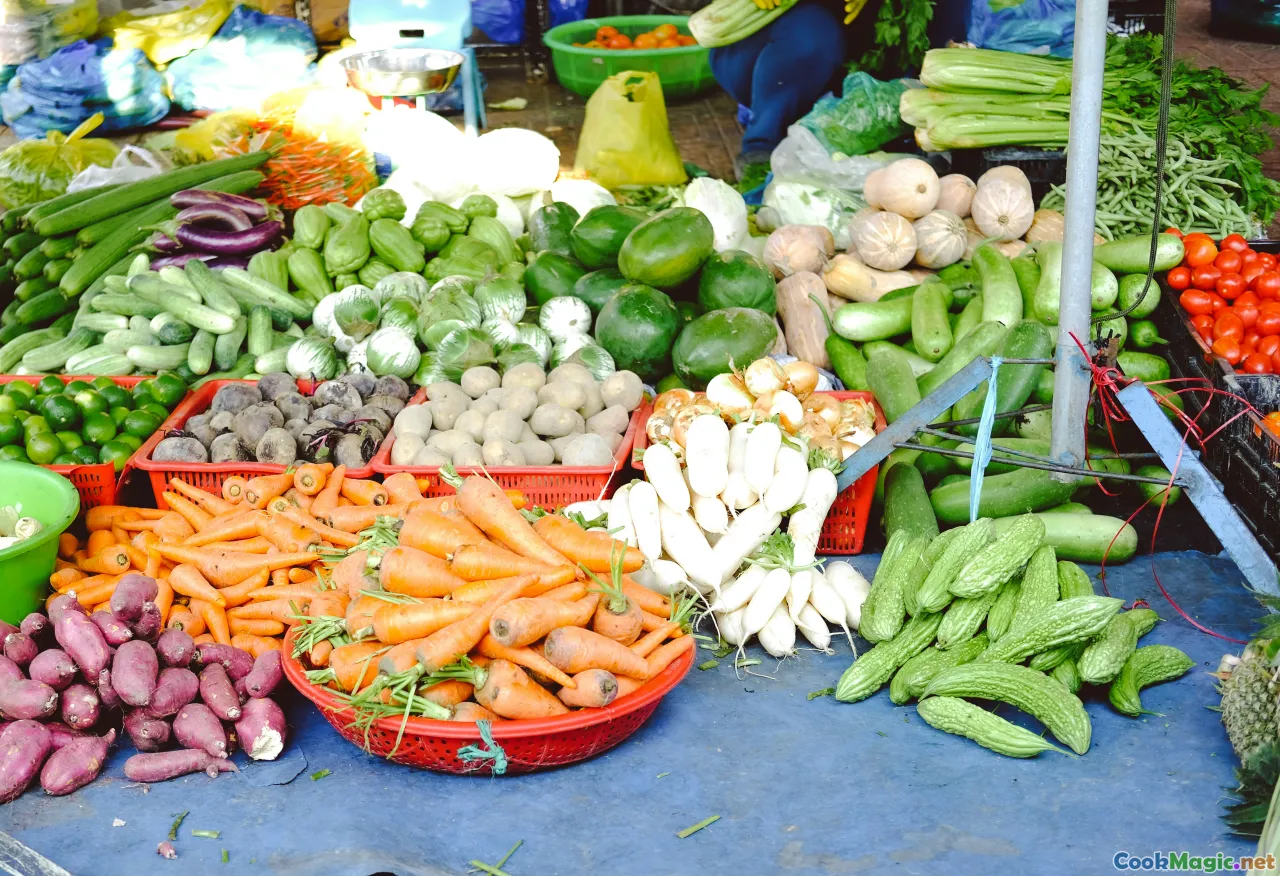
We talk a lot about carbon footprints, but for cooks, flavor is our north star—and flavor aligns beautifully with sustainability. Food grown in living soils tends to be denser in micronutrients and volatile aromatics, which translates to brighter tomatoes, more complex carrots, and leafy greens that taste like sunshine filtered through chlorophyll. When you choose ingredients from polyculture farms, regenerative ranches, small fisheries, or community gardens, you aren’t just reducing emissions; you’re backing the ecosystems that deliver the most interesting flavors a chef can work with.
Consider the ripple effects:
- Agriculture that nurtures soil microbiomes helps plants pull mineral complexity from the earth. That’s not poetry; it’s chemistry you can taste in an heirloom squash roasted with only salt and olive oil.
- Diverse crop rotations and cover crops reduce fertilizer needs and run-off. The water downstream stays clearer, the shellfish beds cleaner, the oysters briny and sweet instead of muddled.
- Eating more plants and small, fast-growing seafood lowers pressure on ecosystems while expanding your flavor vocabulary: think peppery radish greens, sweet parsnip ends, sardines that taste like the sea on a windy day.
Sustainable eating also protects culinary heritage. From Ethiopian injera made with resilient teff to the Mexican milpa system—corn, beans, squash dancing together in soil and in the pot—traditional foodways are blueprints for nourishment with low waste. These are not compromise foods. They are the foods that built cities and song.
Flavor as a Compass: Choosing Biodiverse Ingredients
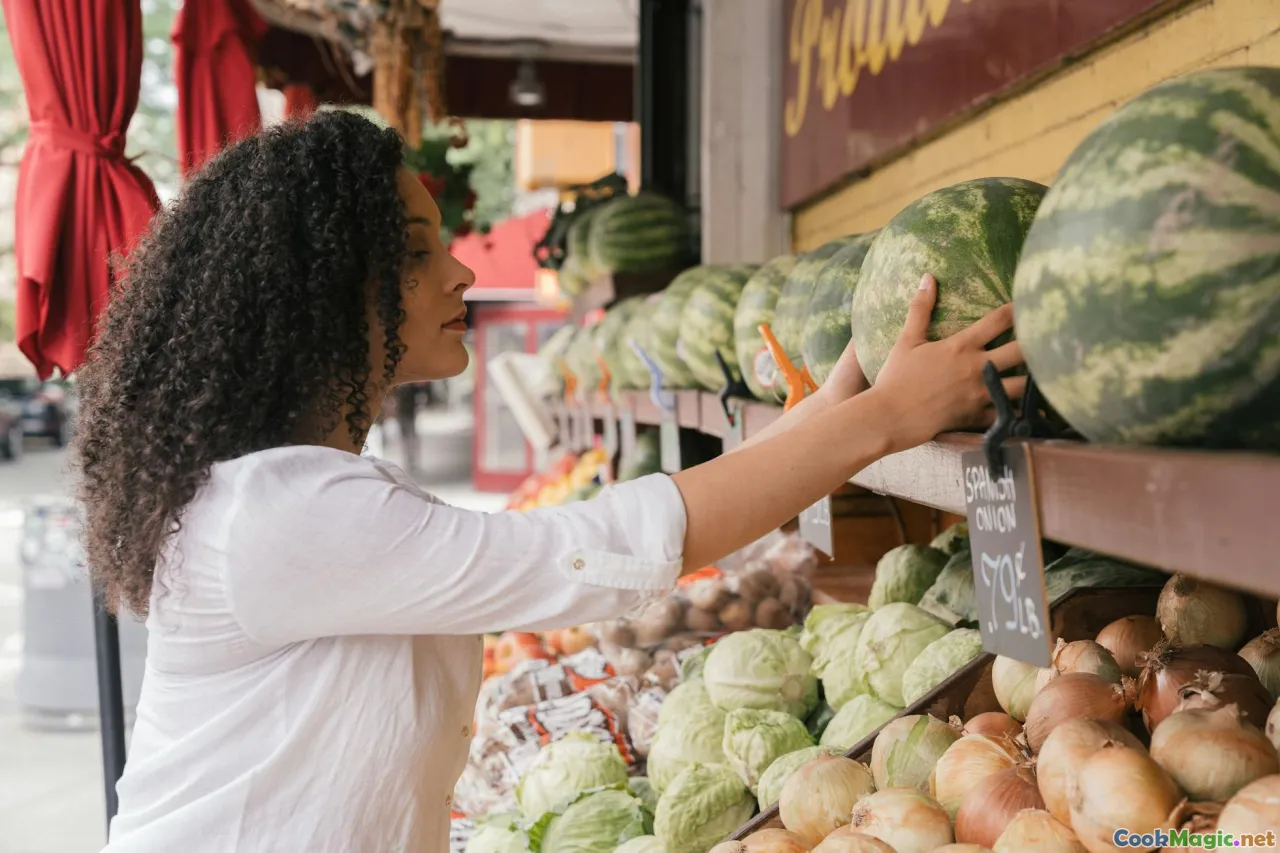
A chef I admire in Marseille keeps a notebook of tomatoes: yellow pears with lemony perfume, ribbed Costoluto with a sharp green bite near the stem, knobby oxhearts that collapse into velvet under heat. She isn’t just being romantic. Biodiverse ingredients allow a broader palette of acids, sugars, textures—and each variety corresponds with different agronomic practices and resilience. If you can’t taste your way through a tomato flight at your local market, try apples in fall or beans in winter.
Three places to flex this muscle:
- Beans: Swap commodity cannellini for Iroquois white corn beans or Rancho Gordo’s Ayocote Morado. The difference? Ayocote brings purple-black skins that snap like thin lacquer and a chestnut-like, almost cocoa finish. Paired with rosemary and garlic in a thick braise, they sing.
- Grains: Emmer, einkorn, and heritage wheat lend bran-forward sweetness and a slight honey aroma to breads and pastas. Freshly milled rye flour smells like warm cocoa and pine needles, a perfume you can follow into your sourdough starter.
- Brassicas: Instead of anonymous broccoli, seek spigarello or fiolaro in winter. Their leaves hold mineral bitterness that melts into umami when kissed with anchovy and lemon zest.
If a producer can tell you the variety and how it was grown, you’re already on the road to sustainability. When they light up while describing the cover crop mix or the fog in October, that’s the farmer you’ll write into your menu.
The Protein Pivot: Building Umami with Less Meat
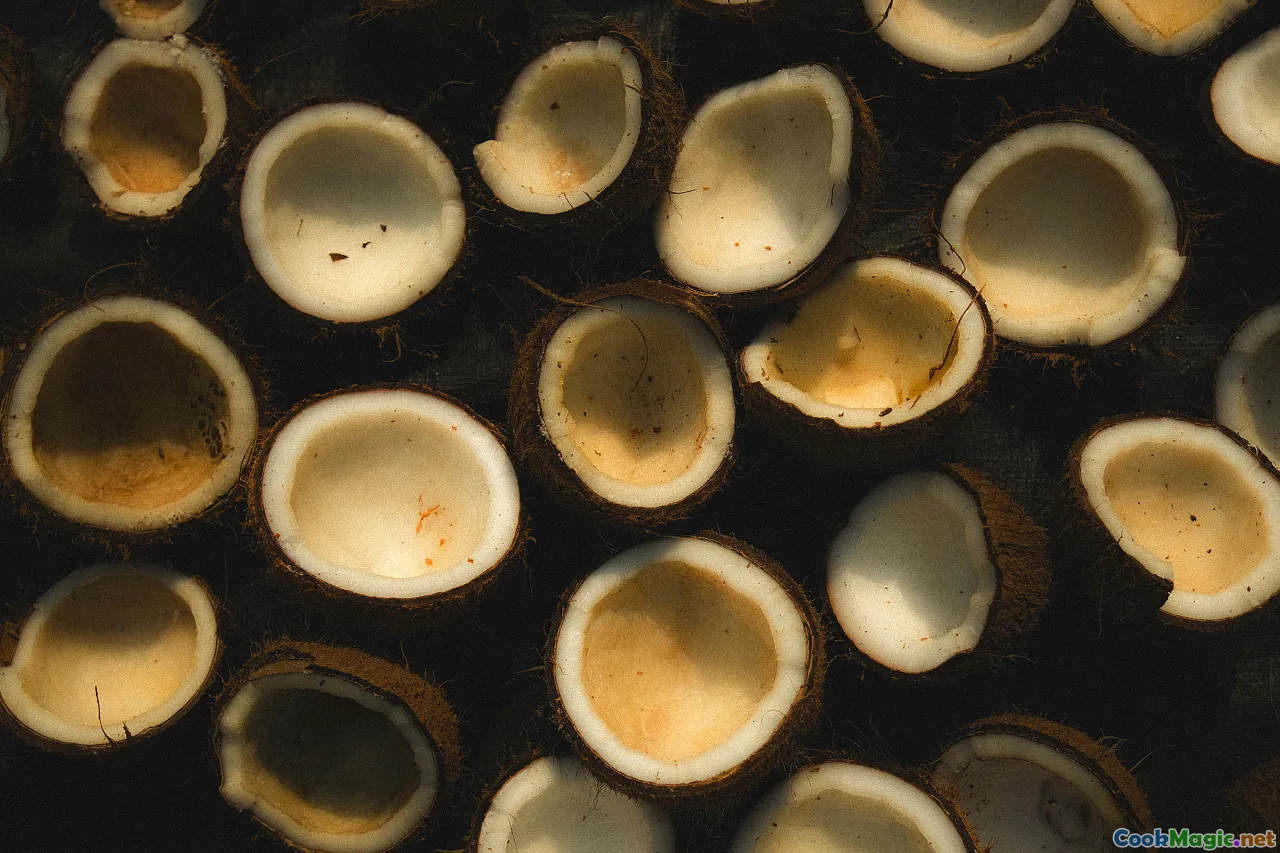
The richest dishes I’ve cooked this year contained more fungi, legumes, and sea vegetables than animal protein—and no one at the table asked, “Where’s the meat?” They were too busy dragging bread through pan sauces.
To pivot protein without sacrificing satisfaction, think like a flavor engineer.
- Maillard magic: Brown your plant proteins with confidence. A cast-iron pan, a film of oil, and patience until the first wisps of smoke. Seared king oyster mushrooms sliced into scallop coins develop a chewy, silky bite and a sweet-saline caramelization that loves white wine and tarragon.
- Layered umami: Use tomato paste, miso, soy sauce, dried mushrooms, and seaweed in combination. A spoonful of white miso blooms complexity in lentil ragù; a strip of kombu simmered with beans adds savor without shouting.
- Fat as flavor taxi: Good olive oil, cultured butter, toasted sesame oil—these carry aromatic molecules to your nose. Finishing oil isn’t garnish; it’s delivery.
- Stock as architecture: A roasted vegetable stock (onion peels, fennel tops, mushroom stems) reduced by half delivers jelly-like body and glossy mouthfeel to braises.
Comparison tasting: two cassoulets.
- Classic: duck confit, pork sausage, white beans. Gorgeous, rich, heavy.
- Earth-forward: ayocote beans, smoked paprika, charred leeks, mushroom confit (slow-cooked in olive oil with garlic and thyme), and a breadcrumb crust enriched with walnut oil. In blind tastings at our test kitchen, the second scored higher for aroma and digestibility after a long dinner.
Sustainable doesn’t mean meatless. It means choosing meat with intention. A small portion of grass-fed beef, goat from a local herder, or well-raised poultry can be seasoning, not centerpiece. Think of nduja crumbled into a pot of chickpeas, or a ham hock lending its wisp of smoke to a pot of collards—a traditional approach that stretches flavor across more plates.
Ocean-Friendly Cooking: Mussels, Sardines, and Sea Greens

If you love seafood, eat like the sea can hear you. Bivalves—mussels, oysters, clams—filter water and need no feed. Small pelagic fish like sardines and anchovies mature quickly and pack more omega-3s than many luxe species.
Three dishes that prove the point:
- Mussel escabeche on toast: Steam mussels with white wine, bay, and a smashed garlic clove. Whisk together paprika, cider vinegar, and olive oil; pour over the mussels to marinate. Top grilled bread rubbed with garlic, add soft herbs and a squeeze of orange. The mussels drink up the marinade and land on your palate as bright copper and tide.
- Sardine pan con tomate: In late summer, grate ripe tomatoes into a bowl, stir in salt and grated garlic. Pile onto bread slicked with good oil, top with crispy-skinned sardines from a hot pan, finish with lemon zest and baby basil. Sunshine and pier.
- Seaweed and citrus salad: Ribbon kombu and blanched wakame with ribbons of cucumber, toss with toasted sesame oil, rice vinegar, and a julienne of yuzu or grapefruit peel. It tastes like a sea breeze swept through a citrus grove.
Avoid pressure on species like bluefin tuna and Chilean sea bass. Love your fishmonger and ask which species are abundant locally this week. In Lisbon, I learned to trust the sardines that smelled like nothing at all—fresh fish smells of the sea, not fish. In Reykjavik, the best dish I ate was a hot bowl of plokkfiskur made with abundant cod offcuts, potatoes, and butter, tasting of hearth and harbor.
Whole-Vegetable Cooking: Stem-to-Seed Creativity
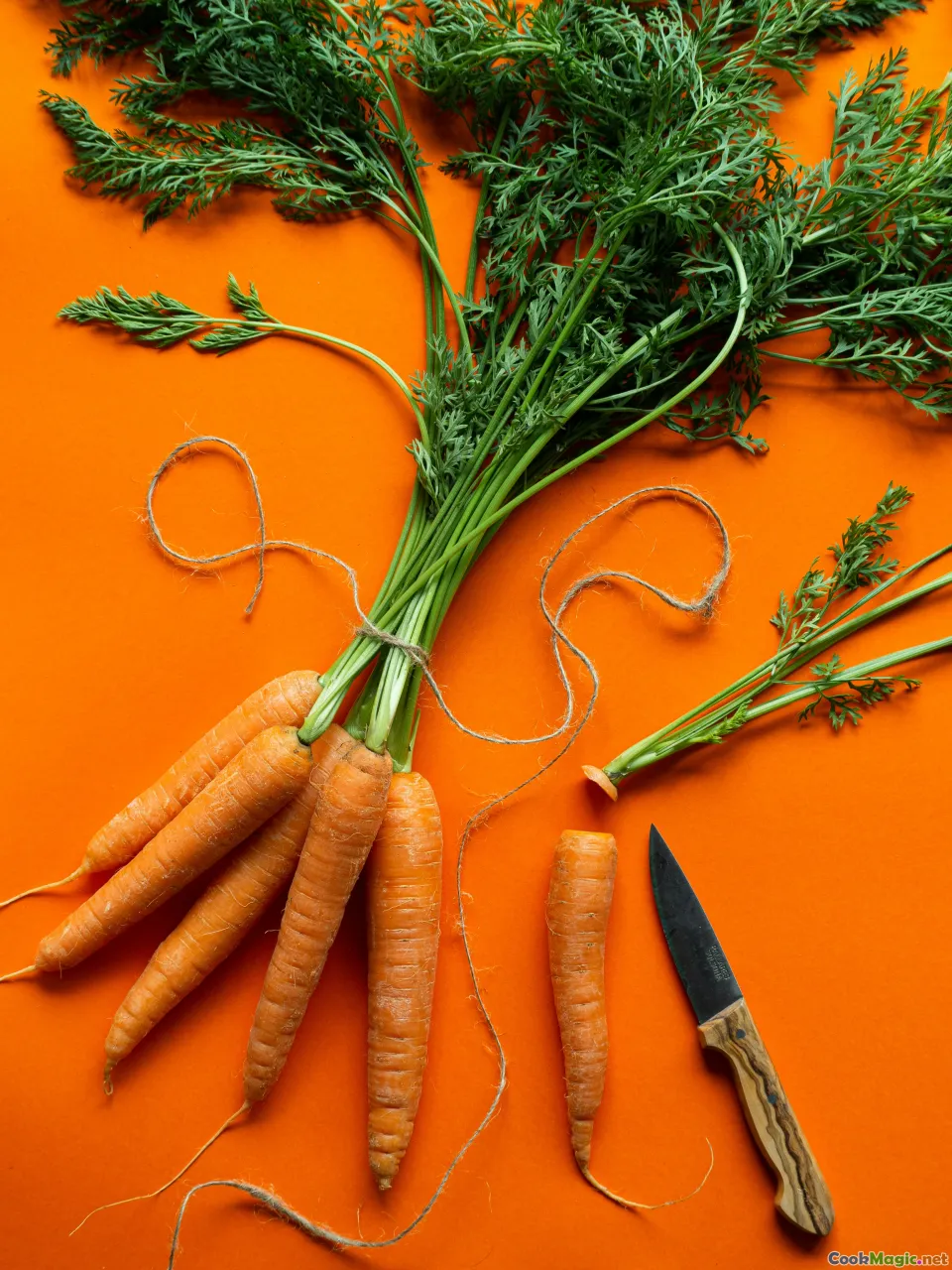
One of my early mentors in a Kyoto temple kitchen taught me to bow before a daikon. “Every part is useful,” he said, shaving threads from the tail into soup and salt-curing the leaves for rice. That ethos yields both economy and a cascade of textures.
Ideas to own:
- Carrot top salsa verde: Blitz carrot greens with parsley, capers, lemon zest, anchovy, and olive oil. Spoon over roasted carrots or grilled mackerel.
- Corn cob stock: After shaving kernels, simmer cobs with onion skins and a nub of kombu for a milky-sweet stock. Reduce and whisk in miso for a ramen base that tastes like July.
- Watermelon rind achar: Peel the green skin, dice the white rind, cook with mustard seeds, turmeric, green chilies, vinegar, and jaggery. The result: crunchy, tart, quietly floral. Spoon next to grilled halloumi.
- Swiss chard stem agrodolce: Sauté stems with garlic until tender, deglaze with red wine vinegar, add a spoon of sugar and currants, finish with toasted almonds. Sweet-sour-crunchy; suddenly the stems are the star.
- Pumpkin seed mole verde: Toast pepitas until they sing, blend with tomatillos, cilantro stems, and lettuce leaves left from service. A velvet-slick sauce that makes Tuesday taste like a holiday.
Collect peels and trimmings in a labeled freezer bin; once full, roast and simmer them into a stock that will push weeknight soups into restaurant territory.
Grains and Pulses: Building the Core of a Meal

The milpa—corn, beans, and squash—remains one of the world’s great food-design systems. So does the Indian thali, where dal is both comfort and center. In New Orleans, Monday red beans and rice started as a way to use ham bones and washday heat; now it’s a flavor tradition that tastes like home.
A few archetypes to adapt:
- Mujaddara (Levant): Brown lentils simmered until tender, folded with rice and crowned with slow-caramelized onions. Spiced with cumin and cinnamon, it’s a study in sweet-savory contrasts.
- Kerala parippu: Moong dal cooked to a buttery collapse, tempered at the end with ghee sputtering mustard seeds, dried red chilies, curry leaves, and a pinch of asafoetida. Serve with red rice and a spoon of lemon pickle.
- Feijoada de legumes (Brazil, adapted): Black beans simmered with orange peel, smoked paprika, roasted squash, and collards. Serve with farofa (toasted cassava flour) to add nutty crunch.
Technique matters as much as ingredients:
- Pressure cookers and Instant Pots save energy and produce creamier beans. Salt beans early; contrary to myth, it seasons more deeply and preserves skins.
- Bloom spices in fat before liquid hits the pan. The fragrance that rises—nutty coriander, peppery cumin—signals extracted flavor.
- Consider texture mapping: a bowl needs soft (beans), chewy (grain), crunchy (toasted seeds), juicy (citrus segments), and creamy (yogurt or tahini). The harmony satisfies like a well-scored piece of music.
Fermentation and Preservation: Time as Ingredient

What is more sustainable than saving summer in a jar? Not just for storage, fermentation transforms scraps into flavor powerhouses.
- Sauerkraut: Cabbage, salt, time. Add shaved fennel fronds and green apple peels. The brine becomes a tonic; the kraut tastes of cold mornings and clean air.
- Kimchi from odds and ends: Daikon tops, napa cores, carrot peels. Salt to wilt, paste of gochugaru, garlic, ginger, fish sauce (or kelp powder for vegetarian depth). Ferment until the kitchen smells simultaneously bright and funky.
- Preserved lemons: Moroccan kitchens use them the way some kitchens use soy sauce—sparingly, to wake everything up. Slipping a sliver under chicken skin before roasting perfumes the meat with sun-baked citrus.
- Sourdough starter: A living pet that eats flour and gives you bread, crackers, waffles. Feed it with whole-grain flours to boost activity; whisk a spoonful into pancake batter for a lactic twang.
- Lacto-brined herb stems: Those parsley and cilantro stems you were going to toss? Pack with 2% salt water and a smashed garlic clove. In a week, you’ll have a crunchy, tangy garnish that tastes like green lightning.
Fermentation reduces waste, extends seasonality, and builds complexity. It’s also a culture—of microbes and people. I’ve stood in a Korean grandmother’s kitchen, fingers tingling from chili and salt, while she explained how the first frosts determine kimchi flavors. That’s sustainability as ritual.
Fat and Fire: Techniques for Satisfying Plant-Forward Plates
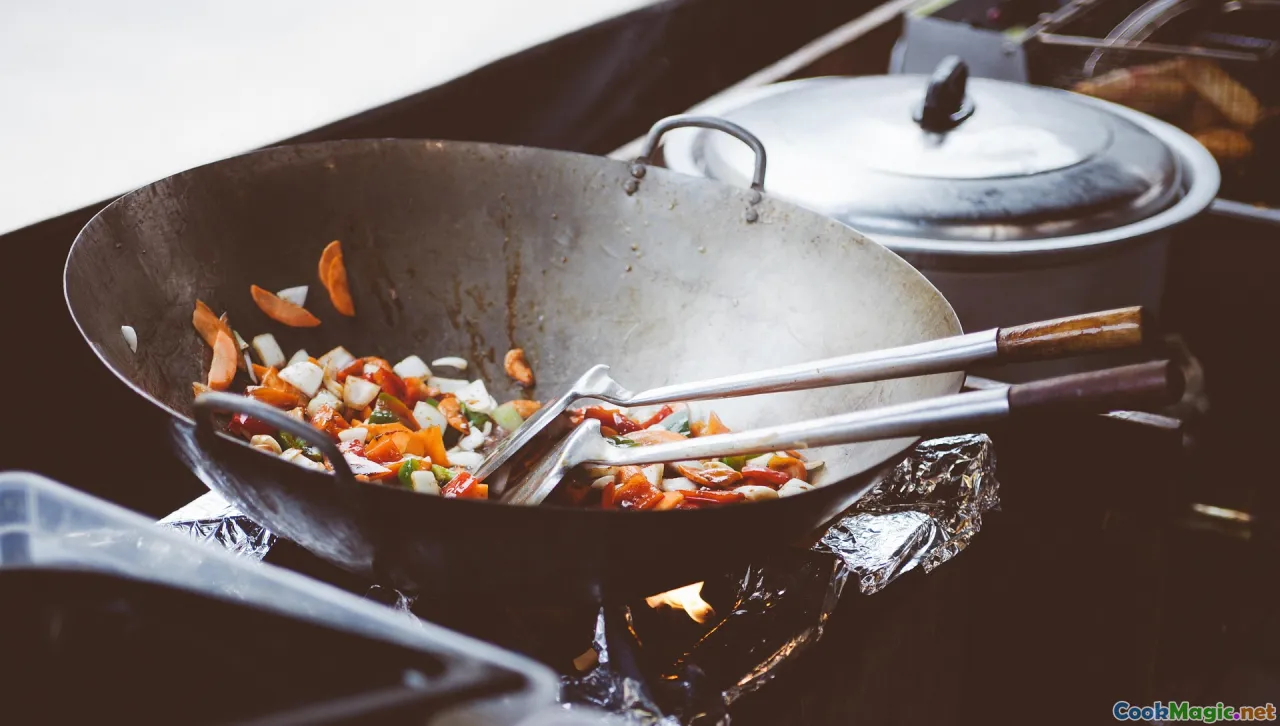
Vegetables become meal-center actors when you give them the same respect you give a steak.
- High-heat roasting: Cauliflower steaks roasted at 475°F until the edges char and the core turns custardy, basted with brown butter and capers, finished with lemon. The aroma is nutty, the bite indulgent.
- Smoke: Cold-smoke tomatoes for 20 minutes before simmering into sauce; the result tastes like a campfire on the Italian coast.
- Wok hei: Quick, blistering heat unlocks the sweetness of pea shoots, the crunch of green beans, the perfume of garlic chives. Use a neutral oil with a high smoke point; finish with a kiss of sesame.
- Confit: Submerge leeks in olive oil with thyme, low and slow, until a spoon slides through. The leftover oil becomes emerald with leek essence—drizzle on everything.
- Nuts and seeds: Toasted hazelnut crumbs with cocoa nibs and chili over roasted beets, tahini swirled into carrots with cumin, pistachio dukkah on tomatoes—fat plus texture equals satisfaction.
Seasonality as a Narrative: Eating the Calendar

Menus taste better when they tell time. Spring is the snap of asparagus and the grass-scent of first peas; summer is tomatoes and stone fruit sugaring your fingers. Autumn leans into smoke and squash; winter murmurs root and brassica, stew and citrus.
Snapshots:
- Kyoto in early autumn: Matsutake grilled simply over binchotan, brushed with soy—foresty incense rising—served with sudachi. Scarcity heightens reverence; one mushroom, four bites, a memory.
- Provence in July: Pan bagnat stuffed with tomatoes, olives, anchovies, and garden basil, the bread soaked with olive oil like warm sunshine trapped in crumb.
- Oslo in January: A bowl of barley and celeriac soup, the barley chewy like small pearls, the celeriac sweet as baked apples. Dill oil dotted on top flashes green hope against snow.
Build a personal seasonality map. In my kitchen, late summer means tomato water broth with chilled noodles and basil seeds. Late winter means roasted cabbage wedges with black garlic vinaigrette and toasted rye crumbs. When you eat with the weather, your cooking naturally becomes sustainable because you ride the wave of local abundance.
Sourcing and Relationships: People Behind the Plate
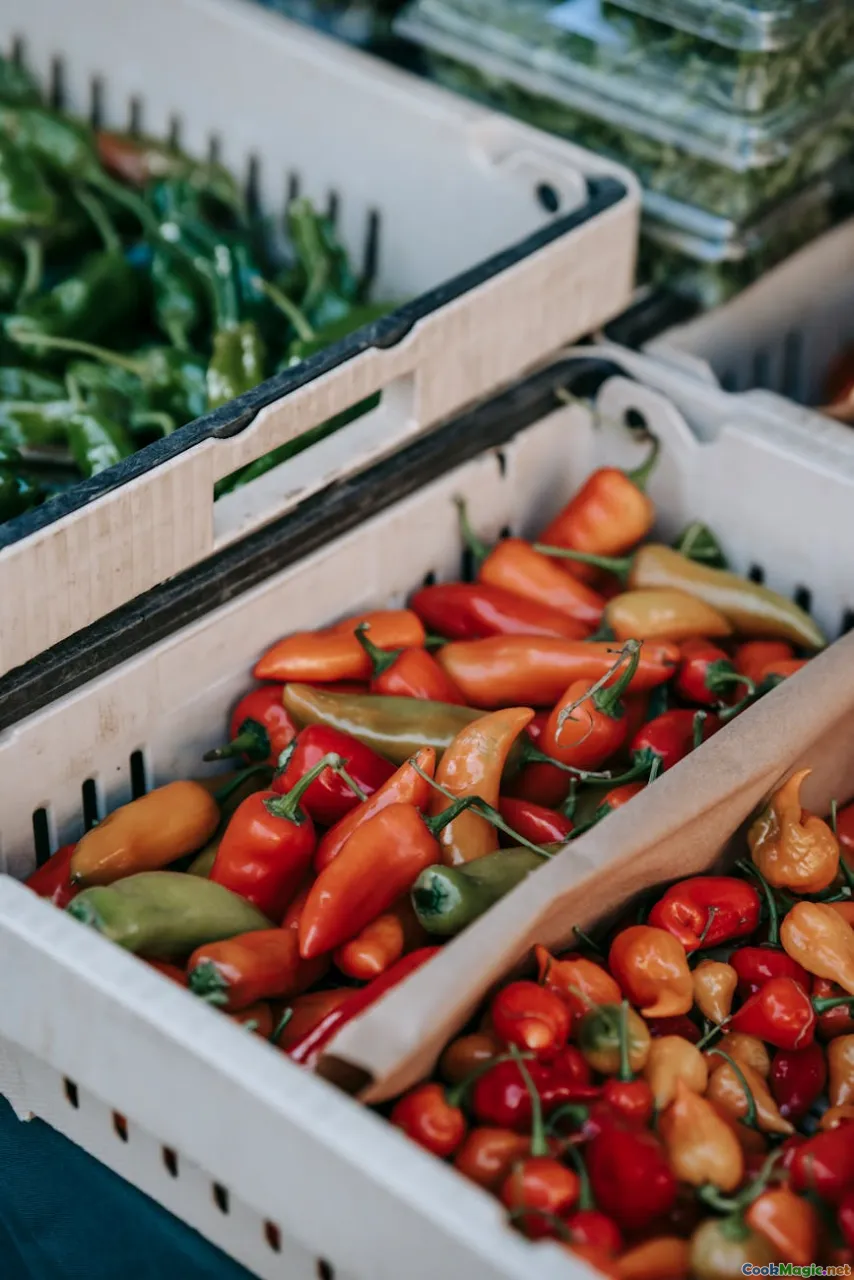
A good dish begins with a conversation. The butcher who knows which farmer dry-ages beef on the bone. The fishmonger who slips you a bag of sardine heads because he knows you’re making broth. The CSA farmer who texts you a photo of frost-kissed kale at dawn.
Ask questions that matter:
- How was this grown or raised? What do you feed your soil or animals?
- What’s abundant right now? What needs love—cosmetically ugly but delicious?
- Do you have seconds for sauce or jam? Can I buy by the case to reduce packaging?
In Oaxaca, a mole vendor suggested I try toasted avocado leaves, and the licorice-smoke perfume changed my sauce forever. In a tiny village in the Philippines, a fisherman handed me lamayo—sun-dried, lightly salted fish—fragrant like low tide in the best way. Small interactions open big doors.
Menu Design: Carbon-Smart, Price-Smart, Guest-Delighted

Design your menu like a good playlist. Start with crowd-pleasers, slide in new notes, and leave an encore.
- Anchor dishes with plant-forward stars. Put your most craveable veggie dish at the top—say, roasted carrots with carrot-top chermoula, labneh, and chili oil. Sales will follow your layout.
- Cross-utilize. If you braise fennel for a main, use the fronds in a sauce, the trimmings in stock, and the leftover braise liquid to glaze grains.
- Portion with purpose. Smaller cuts or shared plates minimize waste. Replace a 12-ounce steak with a 6-ounce marinated skirt steak over a generous bed of barley-wild mushroom pilaf.
- Tell the story on the menu. “Spring barley from Bluebird Grain Farms, charred leeks, pickled kraut brine vinaigrette.” Guests order narratives.
- Price carbon-smart foods to move. Beans and grains have high margins; invest savings into better olive oil, better salt, better finishing touches. Luxury reframed.
Carbon labels are trending, but the most persuasive label is pleasure. When a meatless main gives guests that slow, eyes-closed exhale, they will order it again—no lecture required.
Kitchen Energy and Water: Technique Is Technology

You can taste resourcefulness. It’s the tenderness of pressure-cooked chickpeas, the snap of blanch-shocked greens, the brightness of pasta water preserved instead of dumped.
- Use lids. It sounds trivial, but covering pots slashes cooking time and energy use; aromas intensify in the pot, not in the room.
- Pressure cook. Beans, stocks, and tough cuts collapse into silk in a fraction of time. A 35-minute pressure-cooked veg stock built from roasted scraps tastes as deep as a four-hour stove-top simmer.
- Induction where possible. Responsive heat, cooler kitchens, less wasted energy, fewer scorched pans.
- Batch and chill. Make big pots of grains, cool quickly, and reheat portions. Cold rice fries better; cold beans hold shape in salads.
- Use rinse buckets, not running water. Save pasta water for sauces; the starch turns liquid into silk.
Make the dishwasher your ally: full racks only, scrape not rinse. And keep your walk-ins organized with FIFO discipline; waste hides in disarray.
Baking Sustainably: Flour, Fats, and Sweetness with Sense
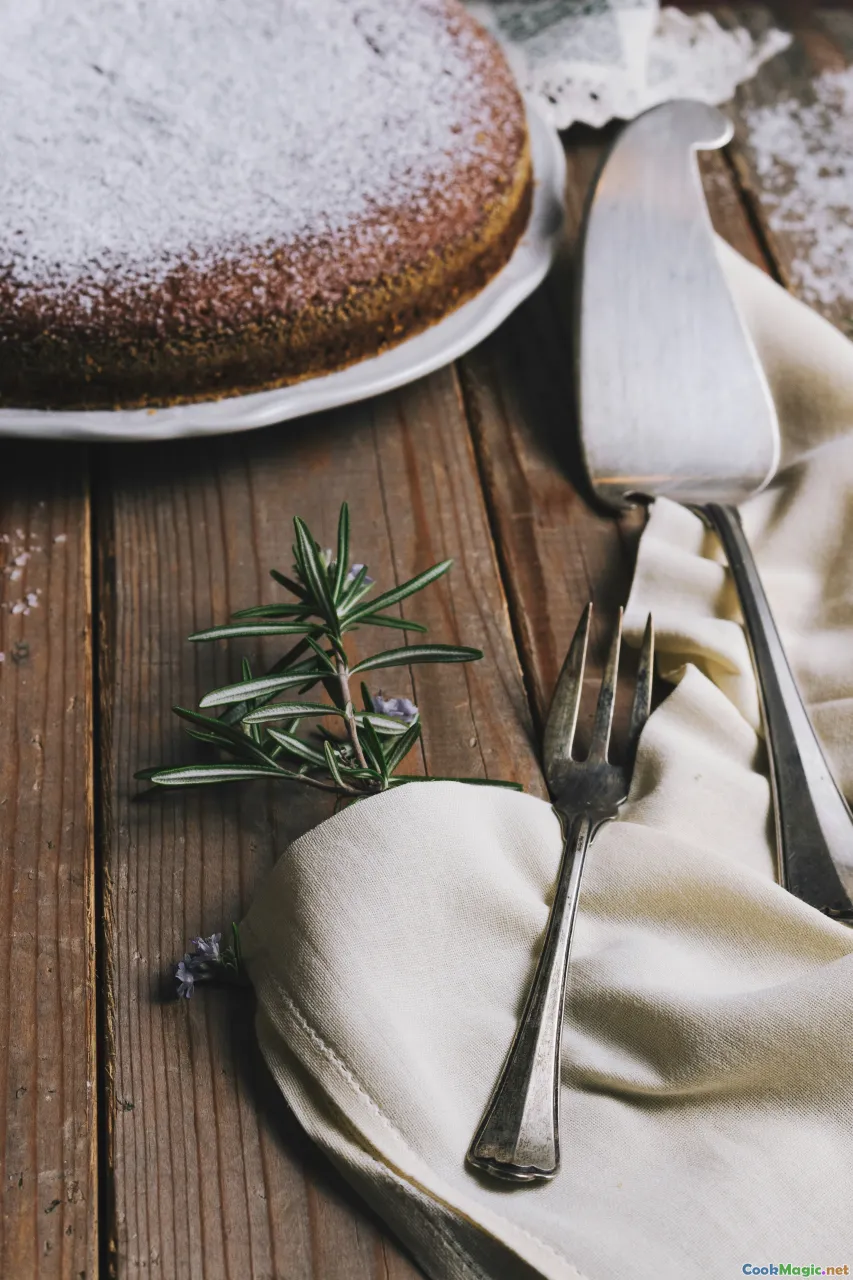
Baking is where sustainability and indulgence can be best friends.
- Sourdough bread with heritage grains: A loaf of 70% freshly milled wheat and 30% white flour, long-fermented, picks up caramel and malt in the crust, honey and hay in the crumb. The aroma fills the house like a warm library.
- Olive oil cakes: Swap butter for good extra-virgin olive oil; you gain grassy high notes and keep cake plush for days. Fold in citrus zest and chopped rosemary. Less saturated fat, more character.
- Fruit-forward sweetness: Peak-season fruit reduces added sugar. A plum galette with rye crust, dusted with raw sugar and lemon zest, tastes like late afternoon sunshine.
- Fats with a story: Avoid palm oil unless RSPO-certified. Use local butter or cultured creams from grass-fed dairies; the fat carries terroir.
- Spent grain and nut pulp: Bake crackers from spent grain after brewing or from almond pulp after making milk; add fennel seeds and black pepper. Deeply toasty, slight chew, perfect with cheese.
The Bar: Sips That Respect the Landscape

Sustainable eating includes drinking. The best cocktails are seasonal, low-waste, and sometimes low-proof so guests can linger without fog.
- Citrus wheels become oleo-saccharum: Toss peels with sugar, let the oil leach out, turn into cordials for weeks of brightness.
- Aquafaba for foam: The liquid from cooked chickpeas shakes into a meringue cap for sours without egg. It tastes clean and reduces waste.
- House shrubs: Equal parts vinegar and sugar with fruit scraps (strawberry tops, pineapple cores). Top with sparkling water or prosecco.
- Local spirits and verjus: Support regional distillers; use verjus for acidity when citrus is out of season.
- Tea and herbal infusions: A thyme and lemon balm soda with honey is an afternoon in a glass.
For coffee and tea service, choose direct-trade roasters, brew to order, and compost grounds. For dairy alternatives, favor unsweetened oat milk from brands transparent about water and land use.
A Week of Sustainable Dinners: A Practical Roadmap

You don’t need a garden or a restaurant kitchen. Here’s a flavorful, low-waste week for a home cook or small team.
- Monday: Red beans and rice with a side of quick-pickled celery leaves. Cook beans in a pressure cooker with bay, garlic, and a piece of kombu. Finish with smoked paprika and sautéed onions. Leftovers become bean toast under a fried egg Tuesday morning.
- Tuesday: Roasted cauliflower with caper brown butter, parsley stems finely chopped and folded into couscous studded with lemon zest. Save the cauliflower leaves: roast them until crisp for a crackly garnish.
- Wednesday: Mussels with fennel and white wine, served over day-old sourdough grilled and rubbed with garlic. Strain leftover liquor for a risotto base on Friday.
- Thursday: Lentil ragù with carrots, celery, and tomato paste, finished with white miso. Fold tossed whole-wheat pasta in and shower with toasted walnut pangrattato. Freeze a pint of ragù for a lazy day.
- Friday: Risotto made with mussel liquor and veg stock; finish with chopped preserved lemon and a fistful of chopped fennel fronds. Seared greens on the side: kale ribbons, garlic, chili, and lemon.
- Saturday: Sardines on the grill with a salad of grilled peaches, bitter greens, and almond vinaigrette. A watermelon rind achar on the side links sweet and salty.
- Sunday: Slow-roasted tomatoes with olive oil, thyme, and garlic; spoon over grilled polenta. Finish with basil and a drizzle of the tomato oil. Any leftover tomato oil becomes tomorrow’s salad dressing.
Batch-cook grains at the start, keep a jar of quick-pickled onions in the fridge, and always save pan sauces. Flavor compounds adore second acts.
The Pantry That Performs: Stocking for Sustainable Flavor

A smart pantry is a sustainability engine. My essentials:
- Dried beans: Ayocote, chickpeas, black beluga lentils, corona beans.
- Grains: Barley, farro, short-grain brown rice, buckwheat groats.
- Alliums: Garlic, shallots, onions; scallion roots saved for broths.
- Seaweeds: Kombu, wakame, nori.
- Ferments: Miso (white and red), soy sauce, gochujang, preserved lemons, capers.
- Nuts and seeds: Walnuts, sesame, hazelnuts, pumpkin seeds.
- Acid: Apple cider vinegar, rice vinegar, sherry vinegar, verjus.
- Oils and fats: Extra-virgin olive oil, toasted sesame oil, cultured butter or ghee.
- Spices: Cumin, coriander, smoked paprika, Aleppo pepper, black peppercorns, fenugreek, turmeric, fennel seed.
- Aromatic boosters: Tomato paste, anchovies, dried chilies, sun-dried tomatoes.
- Flour: Bread flour, whole rye, whole wheat, a small stash of heritage grain flour for special bakes.
With this kit, you can fold vegetables into meals at any hour and coax depth from what the market gives you.
Measuring Your Impact: From Plate to Practice

The smallest habits yield the biggest wins. Pick three metrics and track them for a month:
- Plate waste: Weigh scraps after service or dinner. Adjust portions and garnishes accordingly.
- Bin audit: How much of your trash could be compost or recycling? How much edible food ends up in the bin? Change habits; watch the bin shrink.
- Sourcing mix: What percentage of your purchases are local, seasonal, regenerative, or low-impact proteins? Set a monthly target.
Engage your team or household:
- Plan a staff meal or family dinner built entirely from leftovers. Celebrate when it’s the best meal of the week.
- Share producer stories during pre-shift. It’s easier to sell carrots when you can describe the frost on the farm that sweetened them.
- Rotate a “waste hero” role: one person tasked with finding new uses for trimmings. They get naming rights when a leftover becomes a menu staple.
Sustainable eating is iterative. If you swap half your beef orders for beans and bivalves, if you cut plate waste by a third, if you fall in love with lentils and mushrooms and cabbage, your kitchen will feel different—lighter, more alive.
Notes From My Own Stove: A Personal Map of Flavor and Care
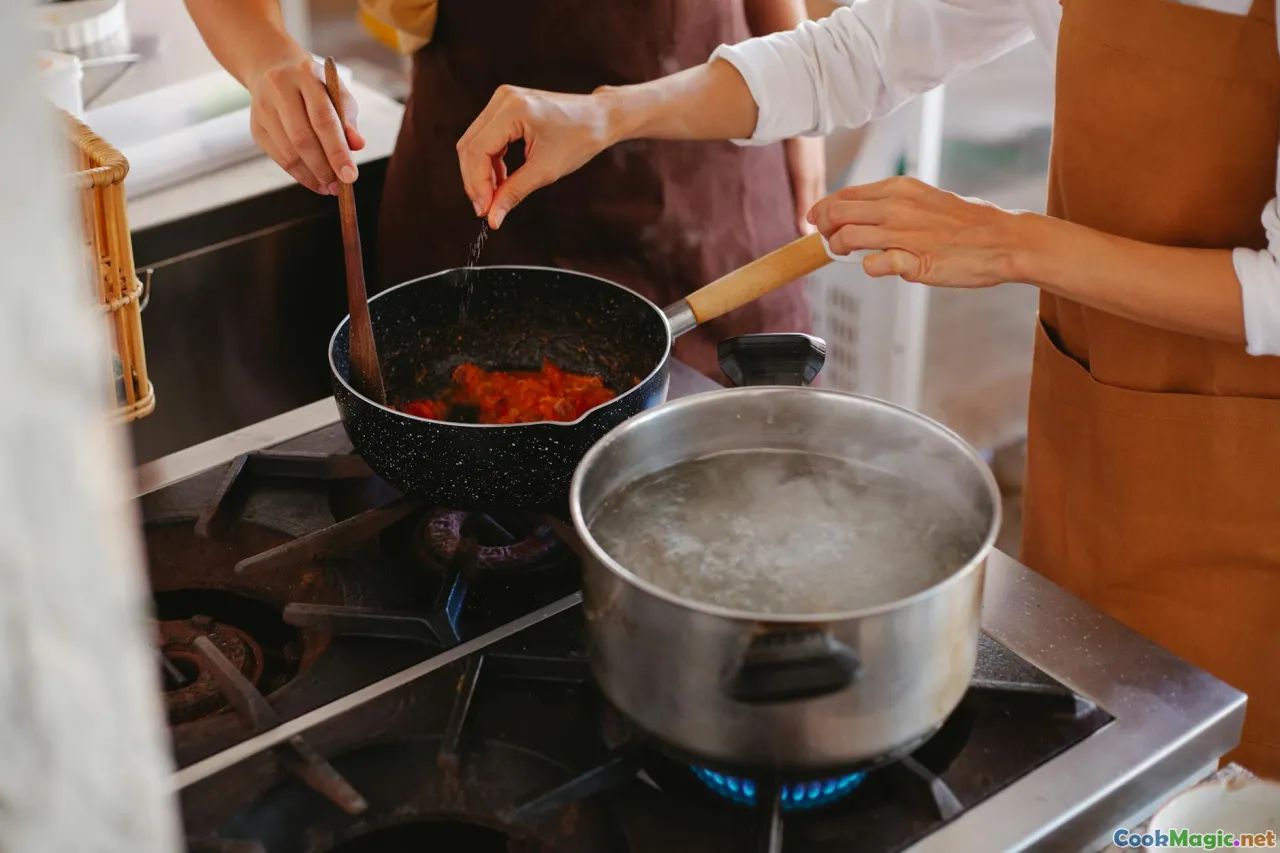
I keep a notebook of dishes that tasted like turning points. The night I first tasted Ethiopian berbere shimmering across a pot of red lentils, heat and smoke wrapping the spoon like velvet. A January in Vermont when a black bean soup finished with orange zest and pickled jalapeños made the kitchen smell like a hearth lit with citrus. The soft hush that fell over a table in Oaxaca when we passed a bowl of milky, freshly nixtamalized atole. The first time I made banana-peel adobo as an experiment, and the savory-sweet, garlicky sauce surprised everyone who swore they’d hate it.
My grandmother’s pot is still dented. I make scrap broth in it—onion skins bleeding amber into water, leek tops perfuming the house, a Parmesan rind melting into everything with a nutty sigh. I pour the steaming broth into a mug and stand by the window. Sometimes the wind smells like rain; sometimes like hot asphalt; sometimes like nothing at all. But the broth always smells like someone cared. And that, more than any data point, is what sustainable eating is: care made edible.
Choose mussels. Choose beans. Choose corn that grew with beans. Choose the ugly tomato that tastes like August. Brown your mushrooms well, salt your water like the sea, save your peels, and stir with attention. The planet is not a concept; it’s what you can smell in a handful of dill, what you can hear in the crackle of roasting cabbage, what you can taste when a carrot from cold ground hits hot pan and turns sweet as caramel.
Cook to protect the flavors you love. Eat to thank the places that grew them. And when you bite into something so vibrant it quiets the room, remember: this is exactly what sustainability tastes like.









